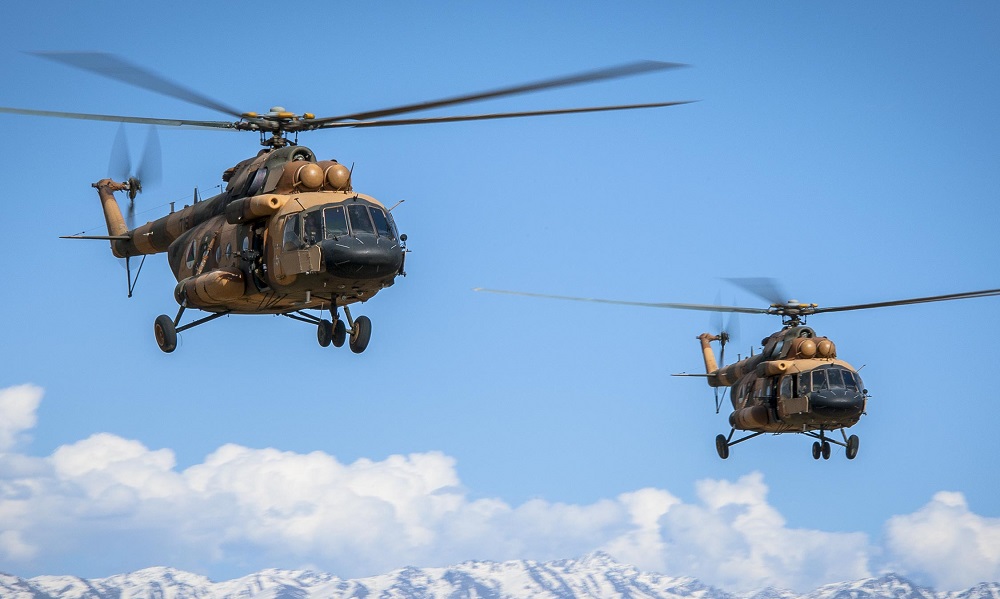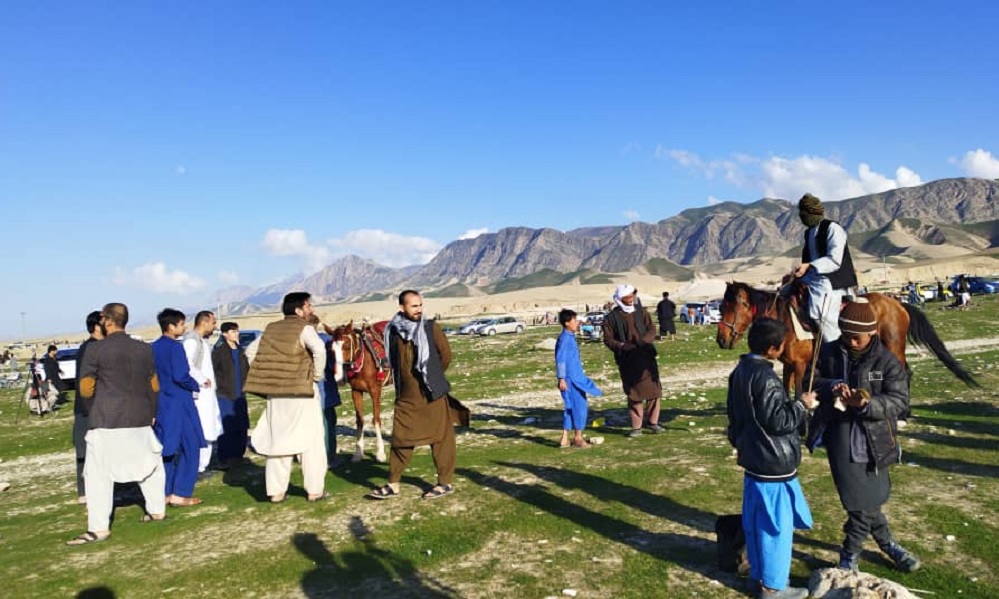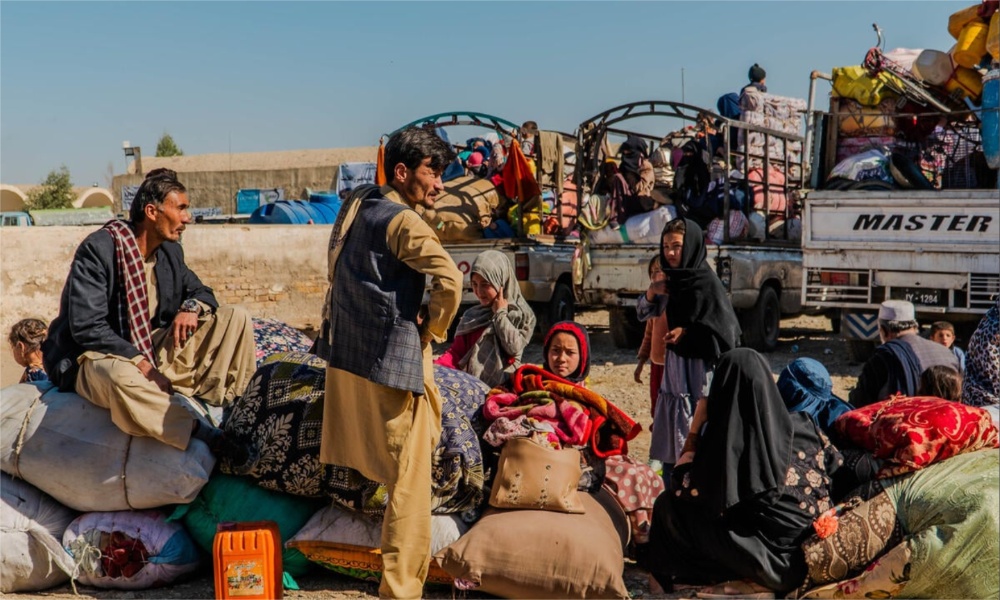Latest News
US gives 16 Mi-17 helicopters procured for Afghanistan to Ukraine: SIGAR

The United States is giving Ukraine 16 Mi-17 helicopters that Washington had procured for the former Afghanistan government, a US watchdog agency said Wednesday.
According to the latest Special Inspector General for Afghanistan Reconstruction (SIGAR) report, the US Department of Defense (DOD) notified Congress in January that it intended to give the Ukrainian government five of the Russian-built helicopters, which had been undergoing maintenance at a Ukrainian facility.
“Ukraine accepted these excess defense articles on March 11,”SIGAR stated in its quarterly report submitted to US lawmakers this week.
“In mid-April, President (Joe) Biden announced a military assistance package to Ukraine that included an additional 11 Mi-17 helicopters that had been scheduled for Afghanistan,” the report added.
This comes after Uzbekistan authorities said last week that dozens of aircraft flown into their country in August last year, during the collapse of the former government, belong to the United States and that these aircraft will not be returned to the Islamic Emirate of Afghanistan (IEA) government.
Afghan air force personnel flew almost 50 helicopters and fixed-wing aircraft to Uzbekistan in mid-August as former president Ashraf Ghani fled the country.
Several more aircraft and Black Hawk helicopters were also taken to neighboring Tajikistan.
The IEA has however repeatedly requested that these aircraft are returned to Afghanistan.
But in a recent interview, Ismatulla Irgashev, a senior presidential adviser, said the aircraft would not be going back to Kabul.
“The U.S. government paid for them,” said Irgashev, his nation’s most senior diplomat dealing with Afghan matters. “It funded the previous Afghan government. So, we believe it is totally up to Washington how to deal with them.
“We’ve kept this military equipment in agreement with the U.S. and have told the Taliban (IEA) so.”
Little has been said since about the issue, in part because of the sensitivity of the issue in Uzbek-Afghan relations and the reluctance of officials on all sides to discuss it, VOA reported last week.
But US defense officials confirmed to VOA that both Uzbekistan and Tajikistan have no plans to give the aircraft to the IEA.
In their latest report, SIGAR also confirmed reports that the fall of the Western-backed Afghan government last August gave the country’s new IEA rulers access to more than $7 billion worth of US Department of Defense equipment.
“DOD estimates that $7.12 billion worth of ANDSF equipment remained in Afghanistan in varying states of repair when US forces withdrew in August 2021,” the report said in reference to the US-trained and funded former Afghan National Defense and Security Forces.
SIGAR also stated, citing the Pentagon, that $18.6 billion worth of ANDSF equipment was procured through the US Afghan Security Forces Fund (ASFF) since 2005 — not the $80 billion reported by some media. Much of that equipment was destroyed during combat operation, it added.
The equipment includes aircraft, vehicles, munitions, guns and communication equipment, as well as other gear, “in varying states of repair,” according to Pentagon spokesperson Army Major Rob Lodewick.
“Nearly all equipment used by US military forces in Afghanistan was either retrograded or destroyed prior to our withdrawal,” Lodewick said in a statement last week.
The SIGAR report quoted the IEA air force commander and former Afghan Air Force (AAF) personnel as saying that about 4,300 members, half of the former AAF, have joined the IEA’s air force, including 33 pilots.
“Only a fraction of the 81 aircraft at the Kabul military airport are functional, including six repaired UH-60 Blackhawks,” the report said.
Latest News
Thousands of local tourists flock to Balkh over Eid-ul-Fitr

More than 12,000 local tourists, along with 21 foreigners, visited Balkh province in northern Afghanistan over Eid-ul-Fitr, Balkh Information and Culture Department officials confirmed.
According to the officials, the tourists visited recreational areas and historical sites during the three-day Eid holiday period.
Tourists visiting the province said they were happy about the improved security situation but called for more recreational areas.
One popular area was Marmul district, which lies about 20 km west of Mazar-e-Sharif, the provincial capital. Visitors said however they would have liked to see more restaurants, mosques, markets and other facilities.
Local officials in Balkh said efforts are being made to create facilities in recreational areas in the province.
In addition to Marmul, other popular destinations in Balkh for visitors this Eid was the Qosh Tepa Canal, Dasht-e-Shadian, Amu River and Chashma-e-Khaja Sikandar.
Latest News
UN rights experts call on Pakistan to stop removal process of Afghan refugees
The experts urged Islamabad to immediately stop mass internal relocations, deportations, arrests, evictions, intimidation and other pressures on Afghans

UN human rights experts have called on the Pakistan government to stop their plans to forcibly remove Afghans from the cities of Islamabad and Rawalpindi, nor to deport them to Afghanistan.
According to a statement issued on Friday, the UN experts (as listed below) called on Pakistan to continue its important role as a neighboring country with a long history of hosting Afghan refugees.
The deadline for their voluntary departure was set for 31 March, but Islamabad moved the deadline by a few days to take Eid-ul-Fitr into account.
“Millions of Afghans in Pakistan are at risk of being pushed back to Afghanistan without regard for their genuine protection concerns – including gender-based violence and the systematic dismantling of the rights of women and girls – in violation of international human rights law and refugee law, and disregarding UNHCR’s non-return advisory,” the experts said.
“We urge Pakistan to immediately stop mass internal relocations, deportations, arrests, evictions, intimidation and other pressures on Afghans to cross the border into Afghanistan, and to uphold the absolute and non-derogable principle of non-refoulement,” they said.
The experts expressed particular concern about the gendered and intersectional impact.
The UN experts have repeatedly spoken out against Pakistan’s Illegal Foreigners’ Repatriation Plan of September 2023, which has already pressured hundreds of thousands of Afghans to uproot their lives and return to Afghanistan.
Ahead of the 31 March deadline, the UN documented a worrying increase in arrests of Afghans. Many desperate Afghans have contacted the experts, fearing persecution by the Taliban in Afghanistan if they are forced to return.
“The most vulnerable are Afghan women, girls, LGBTI persons, ethnic and religious minorities, former government officials and security personnel, human rights defenders, and media workers,” the experts said.
“Children, especially unaccompanied, are at heightened risk of trafficking, child marriage and abuse, while persons with disabilities and older persons are also particularly vulnerable. They should all be individually assessed.”
The experts expressed concern about returns of Afghans to Afghanistan from other countries, potentially contravening international human rights and refugee law.
The experts also acknowledged security risks, including terrorist attacks in Afghanistan, as well as Pakistan.
The experts noted that many Afghans who had left for Pakistan, having been given reasonable expectations of being resettled in a third country, had their dreams of a secure future shattered by the sudden halt of resettlement programmes.
They stressed that funding cuts will reduce the ability of the de facto authorities in Afghanistan, together with humanitarian agencies, to support a large influx of people from neighboring countries.
“Abrupt and drastic funding cuts by donors are already having a severe impact on much-needed humanitarian assistance to Afghans,” the experts said.
“Given the deteriorating human rights situation in Afghanistan, durable solutions are needed for Afghans outside the country, with strong support from the broader international community.”
The experts are as follows:
Richard Bennett, Special Rapporteur on the human rights situation in Afghanistan; Siobhán Mullally, Special Rapporteur on trafficking in persons, especially women and children; Laura Nyirinkindi (Chair), Claudia Flores (Vice-Chair), Dorothy Estrada Tanck, Ivana Krstić, and Haina Lu, Working group on discrimination against women and girls; Ben Saul, Special Rapporteur on the promotion and protection of human rights and fundamental freedoms while countering terrorism; Reem Alsalem, Special Rapporteur on violence against women and girls, its causes and consequences; and Balakrishnan Rajagopal, Special Rapporteur on the right to adequate housing.
Latest News
Pakistan urges global community to block arms flow to militant groups in Afghanistan

A Pakistani diplomat on Saturday called on the international community to block the flow of modern and sophisticated weapons to militant groups in Afghanistan.
“Terrorist armed groups are in possession of billions worth of illicit arms abandoned in Afghanistan,” Syed Atif Raza, a counsellor at the Pakistan Mission to the UN, told an Arria-Formua meeting of the UN Security Council, convened by Sierra Leone.
“We call upon our international partners to recover the vast stockpile of abandoned weapons, prevent their access to armed terrorist groups and take measures to close this thriving black market of illicit arms,” he said.
Pakistani officials have repeatedly claimed that attacks in the country are planned in Afghanistan and that militants use weapons left behind by foreign forces.
The Islamic Emirate, however, has denied the claim, saying Afghanistan is not responsible for Pakistan’s “security failure”.
-

 Latest News4 days ago
Latest News4 days agoMinistry of Economy calls on US to release Afghanistan’s frozen funds
-

 Latest News4 days ago
Latest News4 days agoPakistan ‘extends’ deadline for a week for Afghans to leave the country
-

 World4 days ago
World4 days agoAs Iran tensions build, US military moves warplanes to reinforce Middle East
-

 Sport4 days ago
Sport4 days agoIPL 2025: Batters in race for prestigious Orange Cap
-

 World5 days ago
World5 days agoIsrael kills Hezbollah official in deadly Beirut airstrike
-

 Latest News4 days ago
Latest News4 days agoPanjshir to Kabul water conduit project ‘waiting for budget approval’
-

 Latest News4 days ago
Latest News4 days agoFemale journalists complain about lack of access to accurate and timely information
-

 Business3 days ago
Business3 days agoExports to Pakistan grind to a halt over faulty scanner at Torkham
























